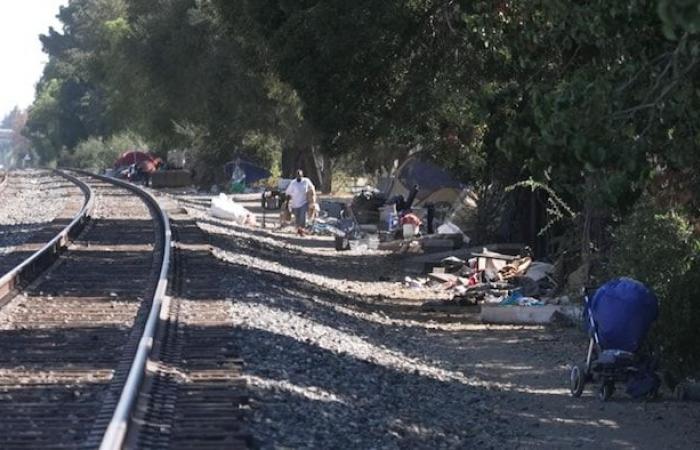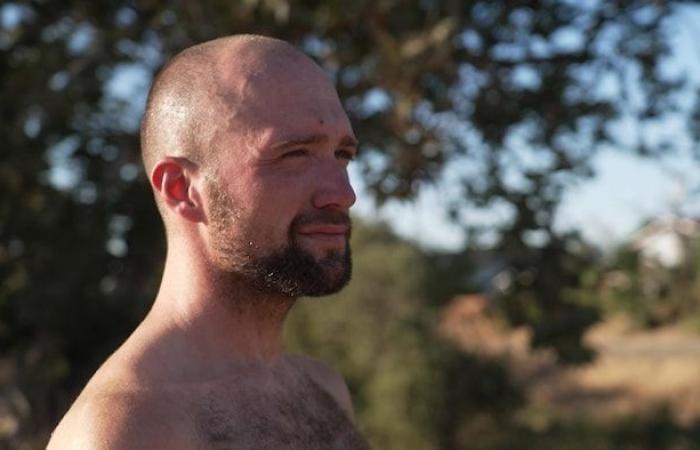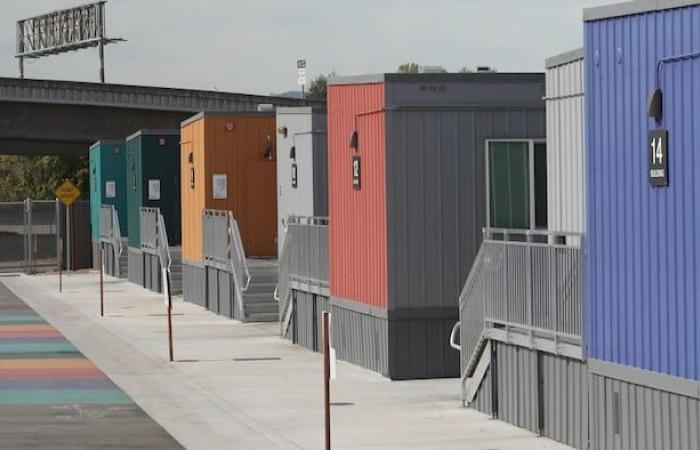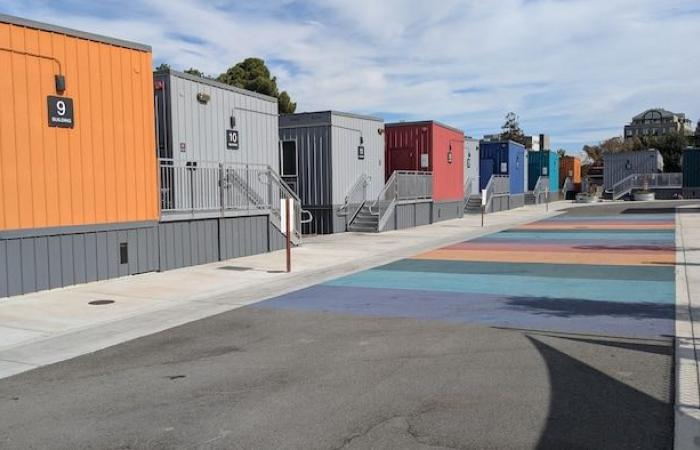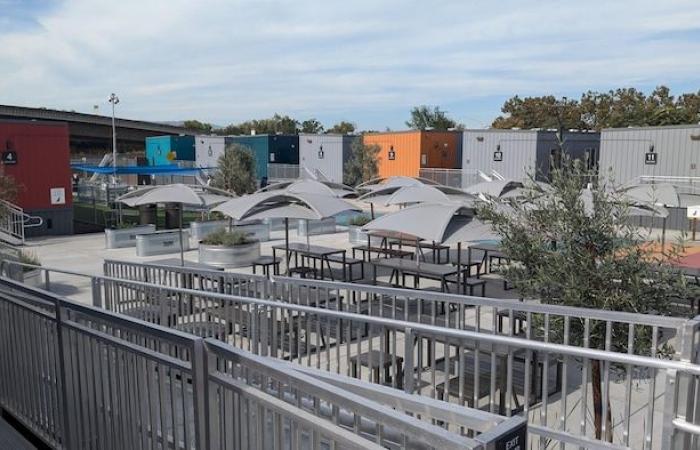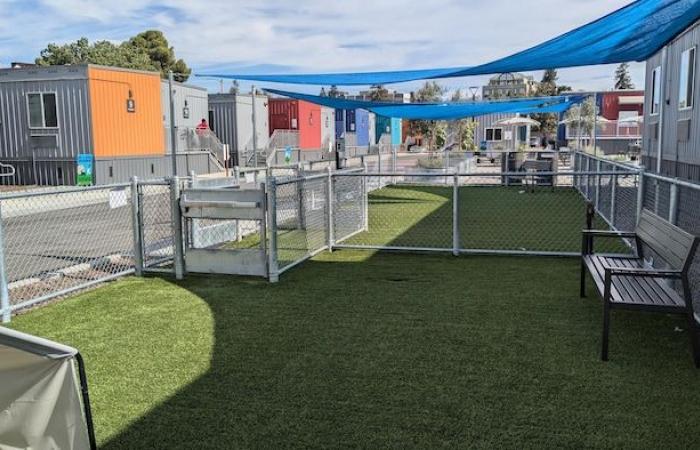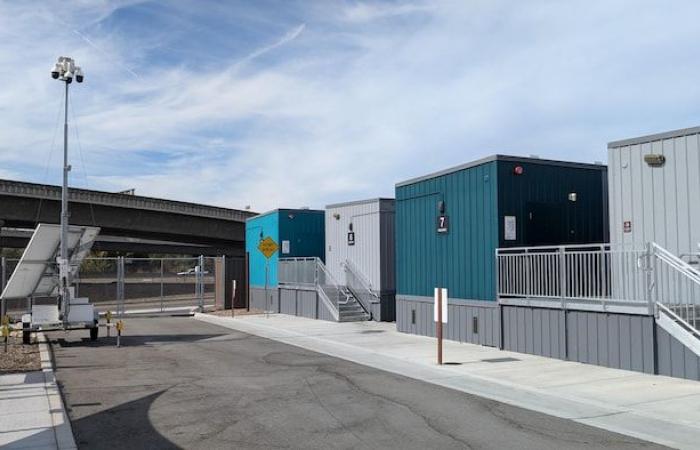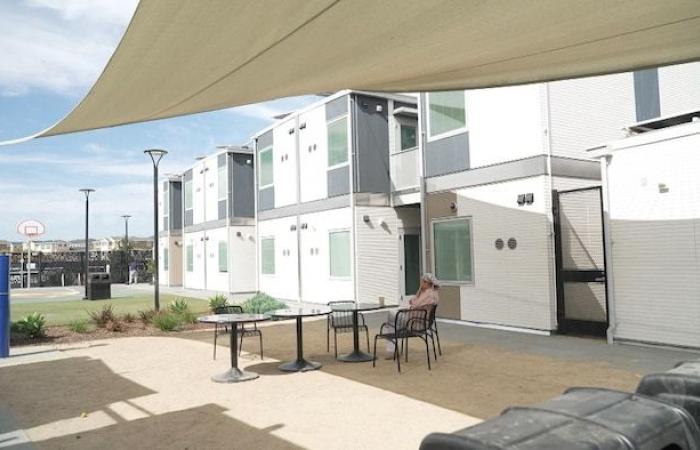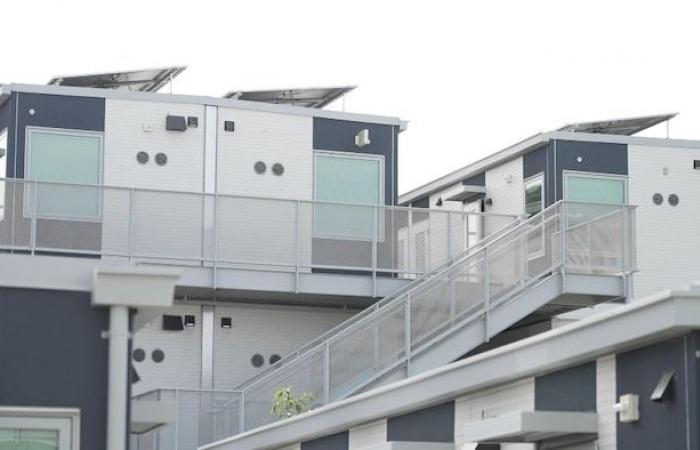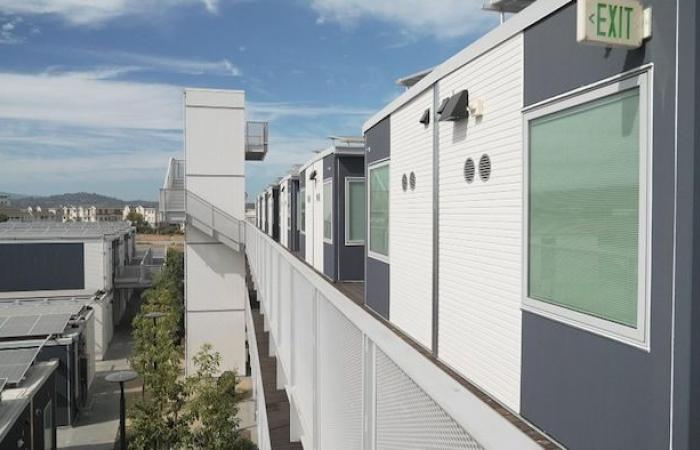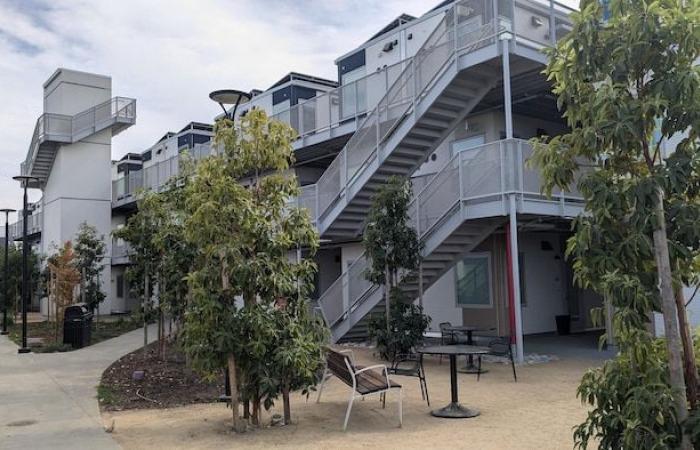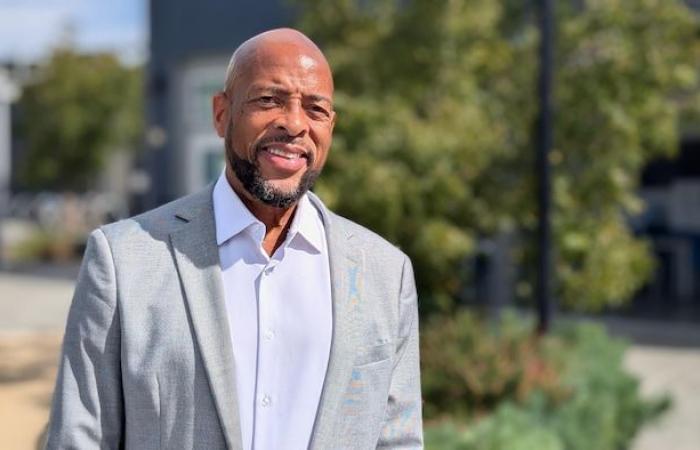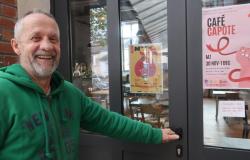On one side, a railway track along which homeless people have found refuge. On the other, affordable housing, too rare in San José. And between the two, a new village which has just emerged from the ground.
Tiny houses
says Sergio Jimenez, enthusiastic about the project, in a neighborhood in the south of the city.
The municipal councilor promises their opening for the month of December. These modular facilities will be able to accommodate 204 people.
It’s a first step to getting off the street. They stop here, regain control of their lives, and can then aim for permanent housing.
Open in full screen mode
A homeless encampment on the edge of a railway line in San José.
Photo : - / Mathieu Prost
A solution to the housing crisis
They first appeared in the San Jose area during the pandemic. Since then, these tiny houses have multiplied and improved with each new project. The needs are great.
With nearly 10,000 people experiencing homelessness, Santa Clara County is among those with the highest proportion of homeless people in the United States.
In the heart of Silicon Valley, the housing crisis is hitting hard. Kyle can attest to this from his tent set up on the banks of the Guadalupe River which runs through San José.
The cheapest rent is $1500
explains the 28-year-old young man.
Open in full screen mode
Kyle, 28, has been camping on the banks of the Guadalupe River in San Jose for 5 years.
Photo : - / Mathieu Prost
On average, a one-bedroom apartment costs $2,500 per month (around $3,500 CAD). Tiny houses are a very good solution for us
adds Kyle, who has lived in this camp for five years. But no one offered him to join one.
The challenge of social acceptability
The project was born from an observation: for every 100 requests for affordable housing in California, only 23 are available. A formula was therefore needed to bridge the gap between the street and long-term accommodation.
This model, based on prefabricated modules, is faster and cheaper than other methods
explains Matt Mahan, the mayor of San José, as he takes us on a tour of one of the locations built on land owned by the municipal police. Some 90 apartments were built there last year.
We can build in 12 to 18 months for around $100,000 per apartment
specifies the one who was elected twice by promising to be held accountable on the issue of homelessness.

Open in full screen mode
Matt Mahan, Mayor of San Jose
Photo : - / Mathieu Prost
However, the construction of these tiny homes has raised concerns.
Initially, there was a lot of fear and opposition from surrounding communities
note Matt Mahan. But citizens are starting to understand the benefits. We’ve shared data that shows that when we open a tiny house site, emergency calls decrease within 12 months.
According to available statistics, calls to the police have decreased by approximately 13% and calls to the fire department by 30%.
Constant improvements
The tiny houses are installed in the immediate vicinity of gathering places for people experiencing homelessness. A sine qua non condition for their good integration, according to Aubrey Merriman. Mr. Merriman directs LifeMoves, the NGO partner of several cities in the Bay Area, including San Jose, for the design and management of these new kind of villages.
Location strategy is one of the lessons he has learned from successive projects since 2021. However, some improvements are much more prosaic. Adding a personal bathroom, for example. The first site only had shared toilets. A mistake that has not been repeated, because the objective is to significantly improve the lives of those who do not have a roof over their heads, and for whom the path to permanent housing is still long.
-
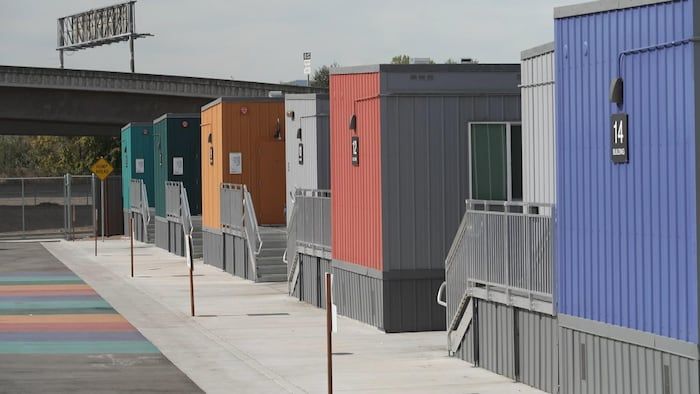
Open in full screen mode
Tiny house site for homeless people in San José.
Photo : - / Mathieu Prost
-
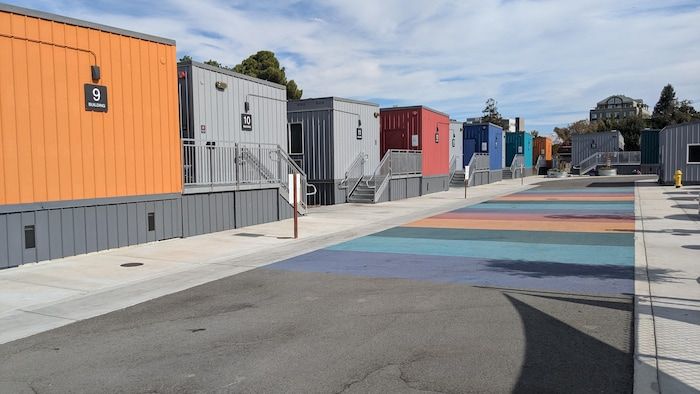
Open in full screen mode
Tiny house site for homeless people in San José
Photo : - / Mathieu Prost
-

Open in full screen mode
Tiny house site for homeless people in San José
Photo : - / Mathieu Prost
-
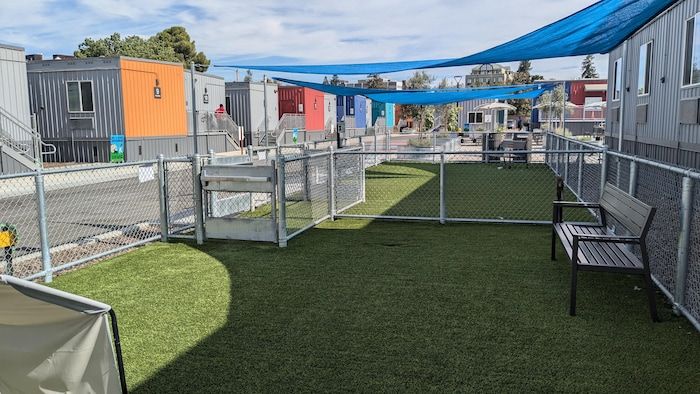
Open in full screen mode
Tiny house site for homeless people in San José
Photo : - / Mathieu Prost
-

Open in full screen mode
Tiny house site for homeless people in San José
Photo : - / Mathieu Prost
Tiny house site for homeless people in San José.
Photo : - / Mathieu Prost
Tiny house site for homeless people in San José.
Photo : - / Mathieu Prost
Photo album: The tiny houses of San José
The street, the camps, the cars, these cannot be the waiting room for permanent housing, explains Aubrey Merriman. So when we can build more efficiently than traditional shelters or transitional housing, we have a moral obligation to do so.
In housing complexes administered by LifeMoves, entrances and exits are controlled, and all spaces are monitored by camera.
Residents are welcomed there free of charge, with no time limit, but with the obligation to try to regain control of their lives, accompanied by social workers who supervise them in their return to the job market or even the creation of their employment file. aid for housing.

Open in full screen mode
For almost a year, Chevy has occupied one of the tiny houses of approximately 12 square meters.
Photo : - / Mathieu Prost
Dentist, doctor and community garden
We pass Chevy, huge smile and sweater bearing the image of Marilyn Monroe.
For almost a year, she has occupied one of the tiny houses of around 12 square meters on police property. I almost feel at home. When you come from the street like me, being able to take a real shower… The bed may not be very comfortable, but it’s a bed, and I have a real roof over my head, an address where I can receive mail.
Before arriving in this tiny house, she wandered the streets for almost six months. His advice for successful support? We need more people who have been through what we have been through. Living in a tent, not knowing when your next meal will be…
In the brand new village that serves as a navigation center for LifeMoves in Redwood City, coordinator Lanel Dominique summarizes her journey, starting with her 27 years of sobriety.
-

Open in full screen mode
Redwood City Tiny Houses.
Photo : - / Mathieu Prost
-

Open in full screen mode
Redwood City.
Photo : - / Mathieu Prost
-

Open in full screen mode
Redwood City.
Photo : - / Mathieu Prost
-

Open in full screen mode
Redwood City.
Photo : - / Mathieu Prost
-

Open in full screen mode
Redwood City.
Photo : - / Mathieu Prost
Redwood City Tiny Houses.
Photo : - / Mathieu Prost
Redwood City Tiny Houses.
Photo : - / Mathieu Prost
Photo Album: Redwood City Tiny Houses
I lived on the streets, in camps, in vacant houses, in cars, in parks. I found my food in the trash and I’m proud of it. Because you see where I am now. People judge the homeless like this and that. No, we get by when we have the right resources.
In terms of service to residents, the new version of LifeMoves villages goes even further. Some 240 housing units spread over three floors, basketball court, community garden, shaded terrace and dog park. But above all, a dentist and medical consultation office. A first in the United States, says Aubrey Merriman, who finances his projects with a combination of public money, private and philanthropic donations.
The accommodations in the last complex cost around $350,000 each. An investment justified by the results, according to him. LifeMoves helps around 7,500 people per year. In the last year, 71% of them then had access to permanent housing.
Reduce urgency
The president of LifeMoves is categorical. The most pressing need is to massively build affordable housing. The solution of tiny houses can only be transitory.
It is not about replacing or competing. But it helps reduce the urgency of building this permanent housing.
However, he plans to improve his next project by designing the homes as real apartments allowing total autonomy in order to be able to offer them for rental to residents who wish to stay after having benefited from the services.

Open in full screen mode
Aubrey Merriman, president and CEO of LifeMoves, the organization that designs and manages several tiny house complexes in California.
Photo : - / Mathieu Prost
Aubrey Merriman is originally from Montreal. He grew up in the Little Burgundy district until he was 19. Montreal is to Canada what Silicon Valley is to the United States. If there is to be a solution in the country that can have an impact, it will come from Montreal.
He cordially offers his services as an advisor to pass on the best practices he has learned and enable others to avoid the mistakes that were made in California. This would be the quintessence of the virtuous circle!
The secret to the success of these tiny houses or transitional housing can be summed up in 5 P
selon Aubrey Merriman.
Priveted: privacy must be guaranteed with personal spaces
Poils: pets are welcome, a priority for some residents
Procks: a loved one or caregiver must be able to have easy access to the facilities
Possessions: provide sufficient space for property belonging to residents
Pprograms: support services are offered on the site (health, reintegration, housing assistance, etc.)

